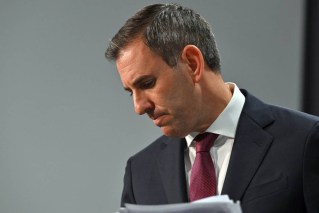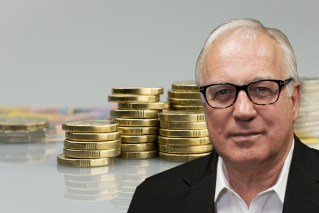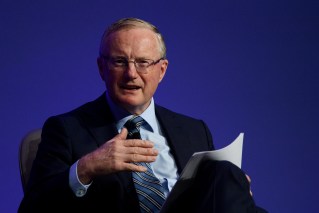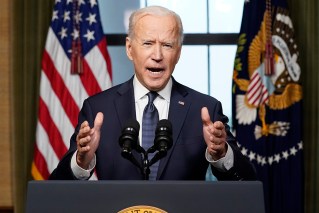Tech mogul ‘remains optimistic’ on AGL bid

Mike Cannon-Brookes' takeover run at AGL has been rebuffed but there is still a lot to play out. Photo: Getty
AGL Energy has rejected the first salvo in a multibillion-dollar takeover play by a consortium led by tech billionaire Mike Cannon-Brookes to fast-track Australia’s exit from coal-fired power.
AGL’s power assets are vital for the running of the national electricity market, as well as being Australia’s most polluting power stations, and the bidders are serious about an energy transition.
On Monday, the consortium said it intended to spend $20 billion to transform AGL’s generation fleet, consistent with a target to limit global warming to 1.5 degrees.
Brookfield and Grok Ventures, the private investment company of Mike and Annie Cannon-Brookes, have made a preliminary and non-binding offer of $7.50 per share, or $5 billion.
“The consortium remains optimistic that an agreement can be reached with the AGL board,” the group said on Monday.
“If successful, this will be one of the biggest decarbonisation projects in the world today and show Australia is capable of globally significant projects,” said Mr Cannon-Brookes, who made his fortune through software company Atlassian.
“It will create over 10,000 Australian jobs and ensure customers don’t bear the brunt of higher power prices – a likely scenario if the proposed demerger happens.”
But the AGL board said the offer “materially undervalues the company on a change of control basis and is not in the best interests of AGL Energy shareholders”, and rejected it.
Shares in AGL had surged 11 per cent to $7.95 by midday, as investors placed their bets on a higher offer.
Treasurer Josh Frydenberg said it was too soon to say whether he would use his powers to block the bid as a foreign takeover. Energy and competition regulators would also need to have their say, he said.
“There’s a long way to go with this bid,” he said.
“Australia is investing heavily in renewables and we’ve got a plan out to net zero by 2050, but a key issue for Australians, together with low emissions, is the affordability of power.”
Energy market expert Bruce Mountain said the offer was just a starting bid.
He expects Brookfield and Grok to sweeten the deal, purchase the company, and decarbonise the power sector more quickly than federal and state governments have anticipated.
The consortium intends to make AGL, the nation’s largest emitter, a net zero organisation by 2035.
“To have a material impact on net zero transition, investors need to do more than simply avoid carbon-intensive businesses,” Brookfield managing partner and Asia Pacific chief executive Stewart Upson said.
“We need to be willing to tackle emissions head on.”
Electricity generation is Australia’s largest emitting industry, currently accounting for almost half of emissions.
AGL’s Bayswater power station in the NSW Hunter region is the country’s top emitting electricity generator, ahead of Origin’s Energy’s Eraring power station which is heading for an accelerated shutdown after a shock announcement last week.
AGL’s Loy Yang mine supplies both Loy Yang A and Loy Yang B power plants, fuelling around 50 per cent of Victoria’s energy requirements.
The AGL board stressed it remains committed to its plans to demerge the company and split it into two listed entities – energy retailer AGL Australia and electricity generator Accel Energy – by June 30 to release value to shareholders and pursue “decisive actions on decarbonisation”.
Mr Cannon-Brookes said, as a private company, the transition to renewable electricity could happen more quickly.
The consortium said to protect consumers, thermal capacity would not be taken out of the system until it had been replaced by renewables and storage to ensure network and pricing stability and reliability.
As new owners, they would replace seven gigawatts of capacity through a build-out of at least eight GW of clean energy and storage, supported by access to global capital, renewables expertise and experience owning and running high-quality infrastructure.
AGL Australia is expected to achieve a 50 per cent reduction in emissions by 2030 and Accel Energy would achieve a 55 to 60 per cent reduction no later than 2034.
To do that, Accel Energy will have to bring forward the closure of the Loy Yang A power station in Victoria from 2048 to 2045 and to close the Bayswater power station in the NSW Hunter region by 2033, from 2035 previously.
“The company does not have the capital to fund that transition,” Mr Cannon-Brookes said.
The consortium believes AGL’s demerger plans present “significant risks for shareholders compared to its certain cash offer with the option for equity participation”.
-AAP








